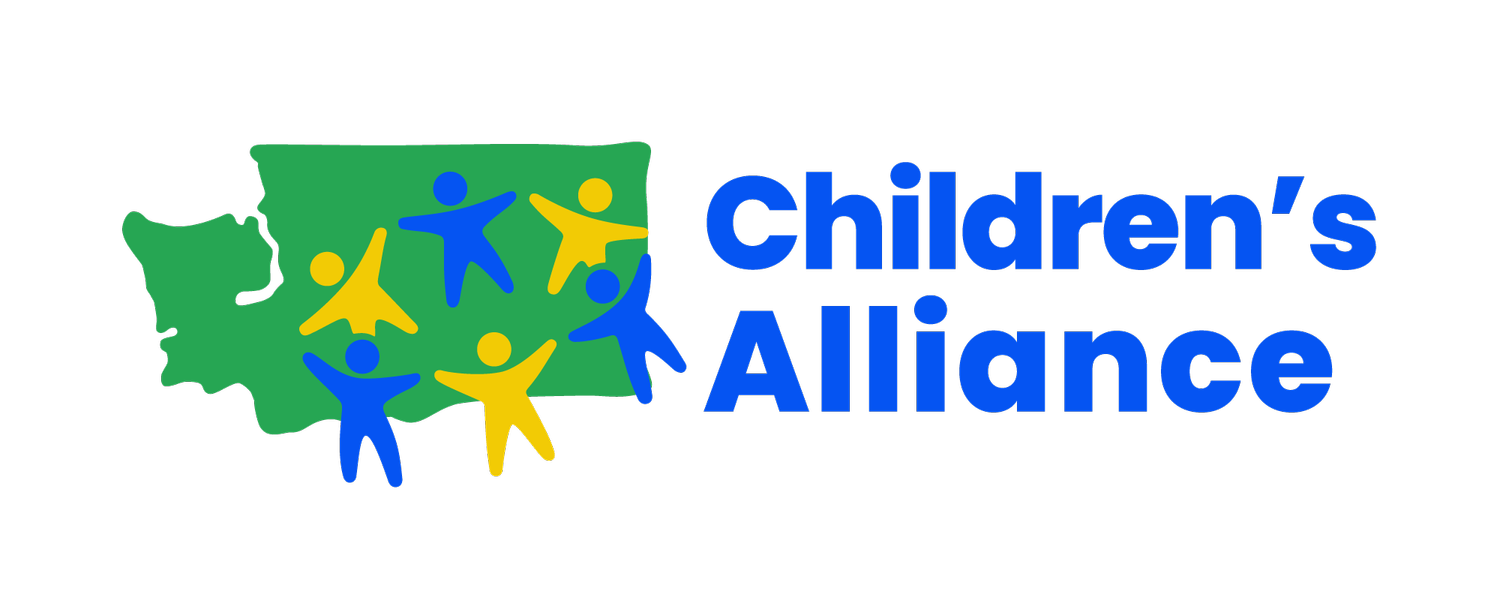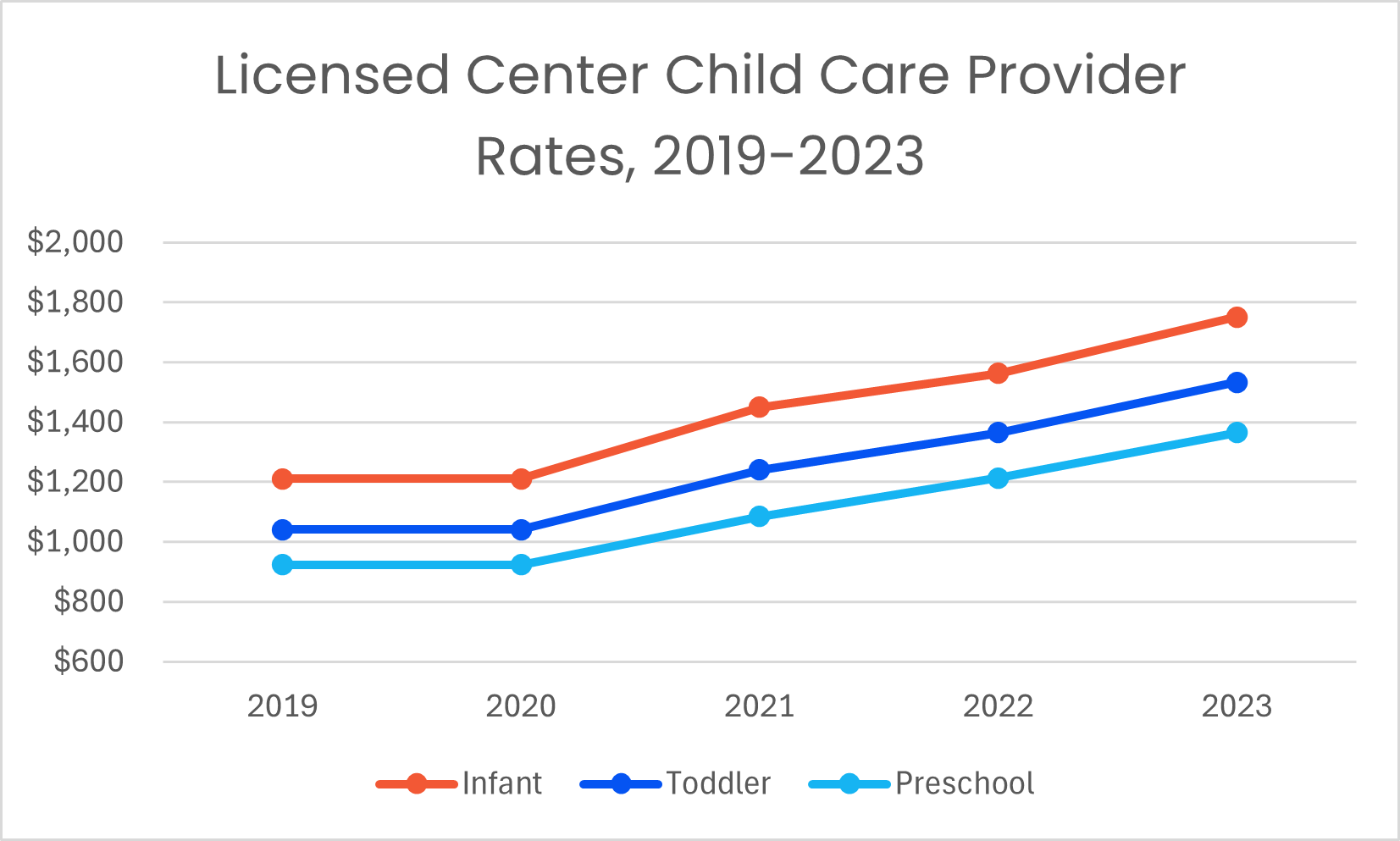ISSUE BRIEF: EARLY LEARNING COSTS IN WASHINGTON ARE RISING—AND OUT OF REACH FOR MANY
Understanding the “Child Care Provider Rate” Indicator: To drive meaningful change for kids and families, we rely on data indicators—specific, measurable pieces of information that show how children are doing across key areas like health, education, and economic stability. One key indicator in our KIDS COUNT® data project is the child provider rate—the median monthly cost child care providers charge families for child care. 'Median' means half of providers charge more than this amount, and half charge less. This measure helps illustrate the cost burden families face and can highlight affordability challenges across counties and income levels. Click here to explore the data.
Overview
Trends show an unexpected increase in annual preschool tuition over the past three years, beginning during the COVID-19 pandemic. The resulting prices are challenging families, providers, and policymakers to find solutions that allow every child to access high-quality preschool
In Washington state, the median cost to enroll an infant in a child care center increased by 44.5% from 2019 to 2023. Significant increases are seen across the child care sector.
Graph 1: Rise in average monthly child care costs by age and provider type (2019 vs. 2023)
Past Work:
Children’s Alliance serves as the backbone organization for the Early Learning Action Alliance, a statewide coalition that collaboratively advocates for policies that can make high-quality early learning accessible to every child in Washington. Although we have seen significant progress, including the commitments to sustained funding increases through the Fair Start for Kids Act, there is still much work to be done.
This is particularly relevant this year, as budget constraints resulted in delays of early learning program expansions envisioned in Fair Start and cuts to many existing early learning programs. For example, our early public preschool program, the Birth-to-Three Early Childhood Education and Assistance Program (Early ECEAP), was not funded for the next two years. This will require currently enrolled families to find an alternative program like Early Head Start, pay out of pocket for their children's early learning programs, or miss out on early learning programs altogether.
In 2023, most families paying privately for an infant to attend a child care center were already allocating at least $21,000; in 2025, we anticipate that median cost is even higher. That price point can be devastating to family budgets, and cuts may mean that fewer children are able to access early learning at all.
Preschool is often more expensive than state university tuition, and many parents in high cost-of-living areas pay over $1,500 per month on average for each child enrolled. This greatly reduces young children’s access to education. In fact, most of our preschool-aged children are simply not in school.
This matters because early learning programs are an important tool to help ensure children have equitable access to the resources they need to learn foundational skills prior to kindergarten. Research shows that high-quality education significantly increases the likelihood of later academic success; those results range from arriving at kindergarten ready to learn to decreasing the likelihood of needing to repeat a grade in later years. Early learning also often serves as an important space for other services, ranging from nutritious meals to developmental assessments to help children access Early Support for Infants and Toddlers (ESIT) services if needed.
Map 1: Monthly median home-based infant care costs are $1,625 in King County, $1,452 in Franklin County, and $1,408 in Jefferson and Snohomish Counties. Click here to access the data and the interactive map.
Ongoing Work:
Every child deserves a high-quality, safe early learning environment. There are a lot of ongoing policy discussions to help make that happen. During the 2025 legislative session, advocates encouraged policymakers to protect the progress made in the first several years of the Fair Start for Kids Act implementation, while also ensuring that inflationary increases in the cost of providing high-quality child care are met through rates that are competitive with the tuition costs for families paying for child care out of pocket. Unfortunately, a historic budget shortfall resulted in delays for many Fair Start for Kids promises, including expanded income eligibility for Working Connections Child Care and guaranteed public preschool (ECEAP) spaces for eligible children. The budget shortfall also prompted significant cuts, including a loss of funding for Early ECEAP and many wraparound services like Reach Out and Read. Combined with likely federal funding cuts across human service programs, Washington state and early learning advocates will likely need to look for creative solutions to prioritize our youngest students amidst financial uncertainty.
———
Data in this brief are sourced from Child Care Aware of Washington and are available on the KIDS COUNT® website, where they can be explored with interactive maps and county-level filters.
KIDS COUNT® is a registered trademark of The Annie E. Casey Foundation., Inc., and is used with permission of the Foundation.



